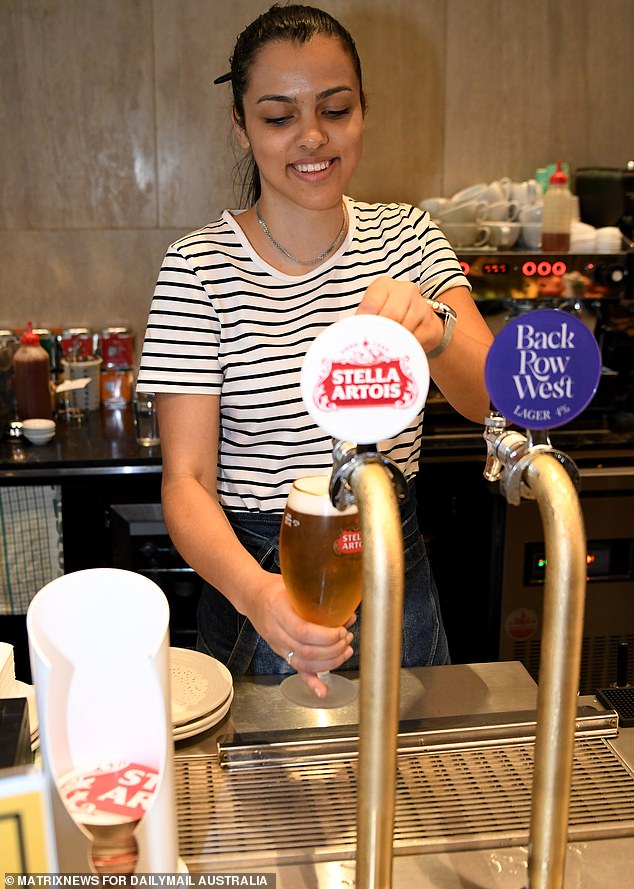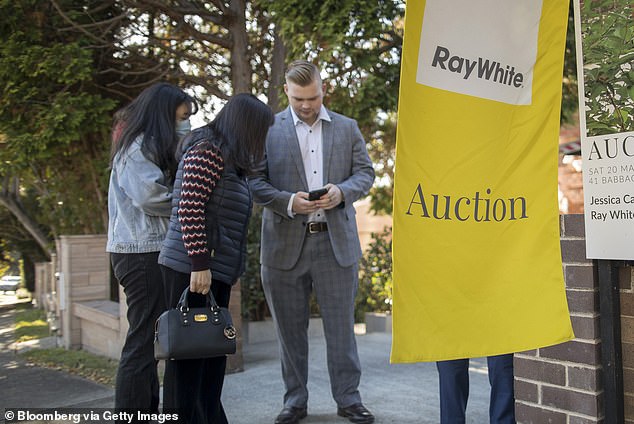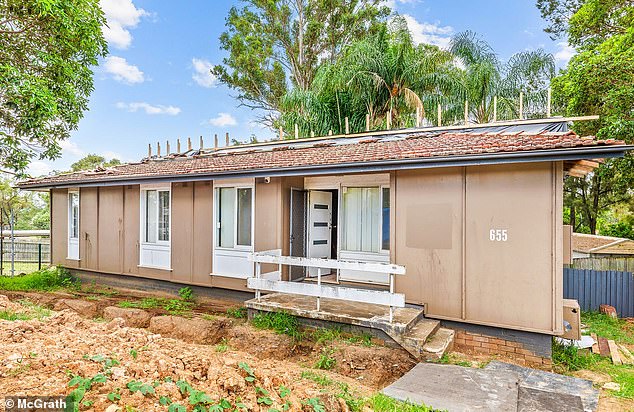Australians who earn more than $98,218 a year are now considered above-average earners if they work full-time.
With this salary, a single professional can now buy a house worth more than $639,000.
New data from the Australian Bureau of Statistics released on Thursday showed the average full-time wage rose 4.5 per cent in the year to November, to $1,889 a week, before bonuses and overtime.
Someone earning an average full-time salary of $98,218 can now borrow $511,500, and RateCity reveals that banks can lend to a borrower with a 20 per cent deposit about 5.2 times their salary.

Australians earning more than $98,218 a year are now considered above-average earners if they work full-time (pictured, a Sydney bartender)
The average-income Australian borrower, with $127,875 in savings, could now buy a $639,375 home, if they could manage $3,146 in monthly payments.
That’s below the median house price across all Australian capital cities.
But there are possibilities if they were to buy a dilapidated house near Mount Druitt in Sydney’s outer west or a house in St Albans in Melbourne’s northwest.
In Brisbane, that amount of money can buy a house in Kallangur, in the north of the city.
Mining-rich Western Australia had the highest average full-time salary, $109,600, making it the only state where workers typically receive six-figure salaries.
Perth has a median house price of $708,335, following a 17 per cent rise in the year to January, CoreLogic data showed.
Someone earning just under $110,000 can borrow $544,500 to buy a home worth $680,625.
In New South Wales, the average full-time salary is $98,353, meaning someone can borrow $512,400 to buy a $640,500 house.
This would be insufficient to buy the median Sydney home, valued at $1.395 million, or the mid-market unit at $828,525.
Victoria’s average full-time salary of $96,621 would allow someone to borrow $501,000 to buy a $626,250 home with a 20 per cent deposit.


Someone earning an average full-time salary of $98,218 can now borrow $511,500, and RateCity reveals that banks can lend a borrower who has a 20 per cent deposit 5.2 times their salary (pictured, an auction of Sydney).


That’s below the median house price across all Australian capital cities. But there are possibilities if they were to buy a dilapidated house near Mount Druitt in Sydney’s outer west (pictured is a house on the market in Bidwill with an auction price guide of $600,000).
This is well below Melbourne’s median house price of $942,750.
The Queensland equivalent salary of $95,696 would require a loan of $494,700 to purchase a $618,375 home, which is well below the average Brisbane home price of $888,628.
The median full-time salary in South Australia is $90,241, meaning someone could borrow $458,600 to buy a $573,250 home, which is well below the median house price of $774,969 in Adelaide. .
The Tasmanian equivalent salary of $86,840 means someone could borrow $436,000 to buy a $545,000 home, well below Hobart’s median home price of $692,619.
The Northern Territory median salary of $95,306 would allow someone to borrow $492,200 to buy a $615,250 home, which is slightly more than Darwin’s median house price of $578,342.

